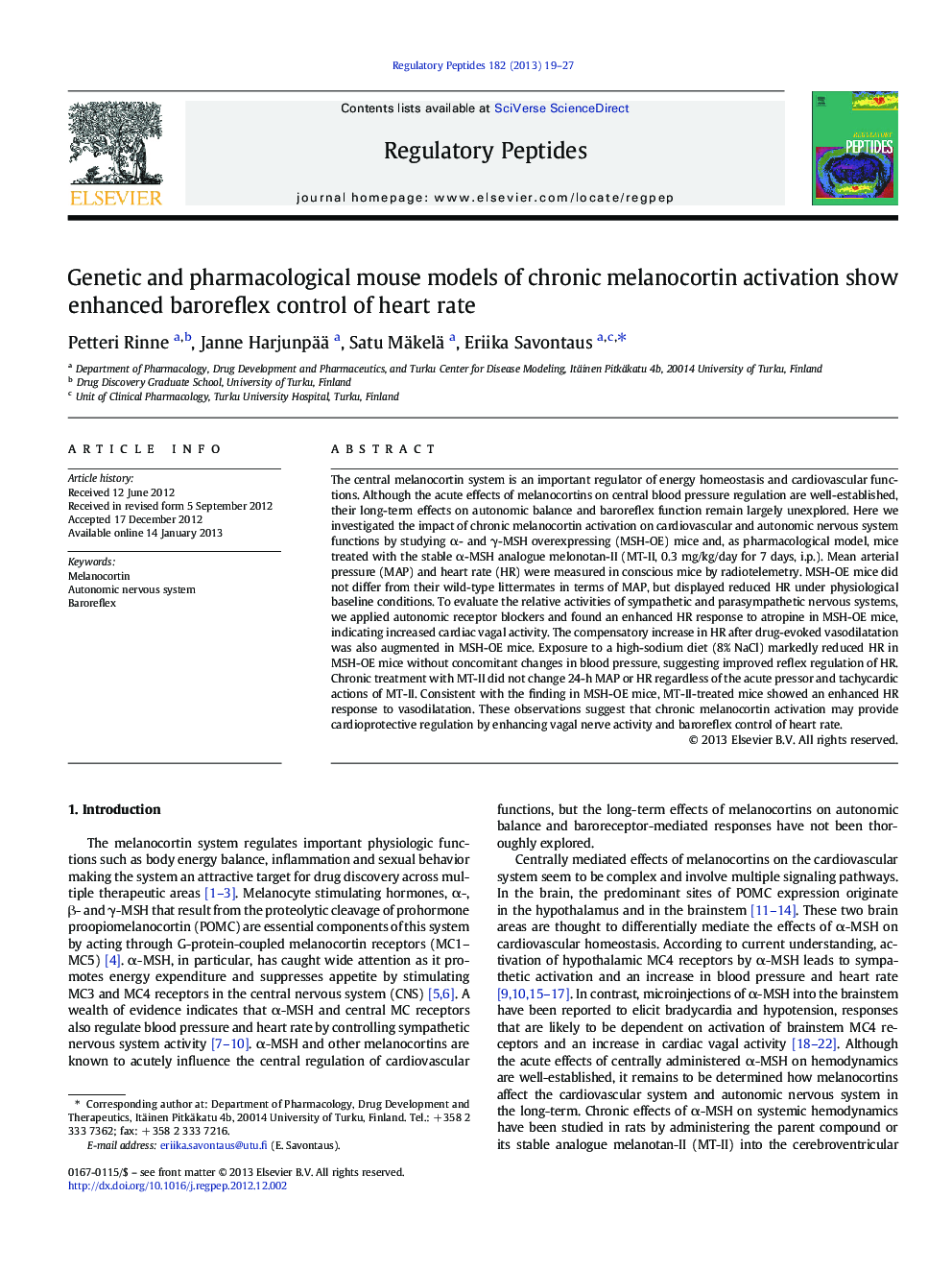| Article ID | Journal | Published Year | Pages | File Type |
|---|---|---|---|---|
| 2022480 | Regulatory Peptides | 2013 | 9 Pages |
The central melanocortin system is an important regulator of energy homeostasis and cardiovascular functions. Although the acute effects of melanocortins on central blood pressure regulation are well-established, their long-term effects on autonomic balance and baroreflex function remain largely unexplored. Here we investigated the impact of chronic melanocortin activation on cardiovascular and autonomic nervous system functions by studying α- and γ-MSH overexpressing (MSH-OE) mice and, as pharmacological model, mice treated with the stable α-MSH analogue melonotan-II (MT-II, 0.3 mg/kg/day for 7 days, i.p.). Mean arterial pressure (MAP) and heart rate (HR) were measured in conscious mice by radiotelemetry. MSH-OE mice did not differ from their wild-type littermates in terms of MAP, but displayed reduced HR under physiological baseline conditions. To evaluate the relative activities of sympathetic and parasympathetic nervous systems, we applied autonomic receptor blockers and found an enhanced HR response to atropine in MSH-OE mice, indicating increased cardiac vagal activity. The compensatory increase in HR after drug-evoked vasodilatation was also augmented in MSH-OE mice. Exposure to a high-sodium diet (8% NaCl) markedly reduced HR in MSH-OE mice without concomitant changes in blood pressure, suggesting improved reflex regulation of HR. Chronic treatment with MT-II did not change 24-h MAP or HR regardless of the acute pressor and tachycardic actions of MT-II. Consistent with the finding in MSH-OE mice, MT-II-treated mice showed an enhanced HR response to vasodilatation. These observations suggest that chronic melanocortin activation may provide cardioprotective regulation by enhancing vagal nerve activity and baroreflex control of heart rate.
► The chronic effects of melanocortins on baroreflex function remain largely unexplored. ► We studied genetic and pharmacological models of chronic melanocortin activation. ► We characterized the cardiovascular phenotype of these models by radiotelemetry. ► These models showed enhanced baroreflex control of heart rate.
